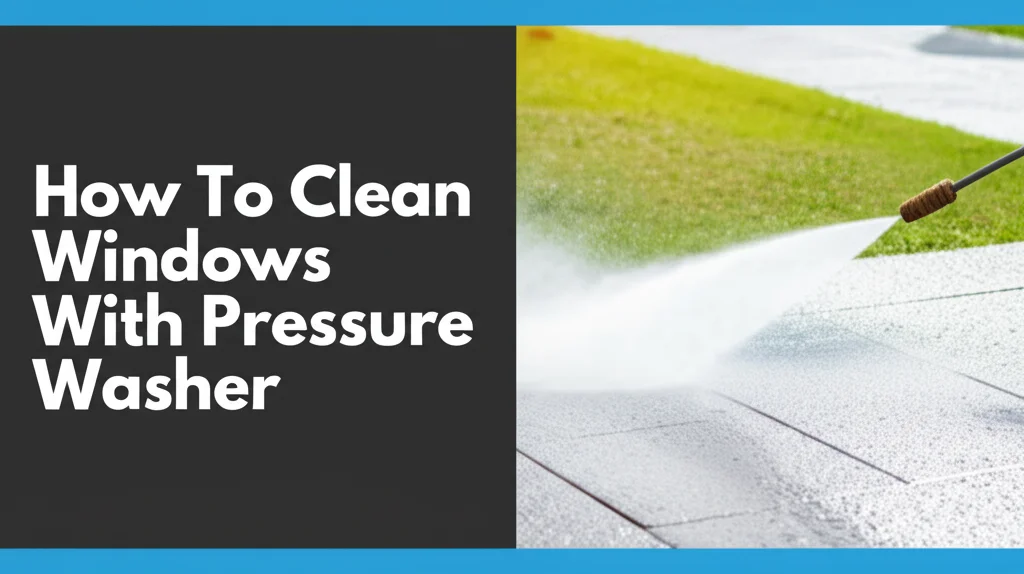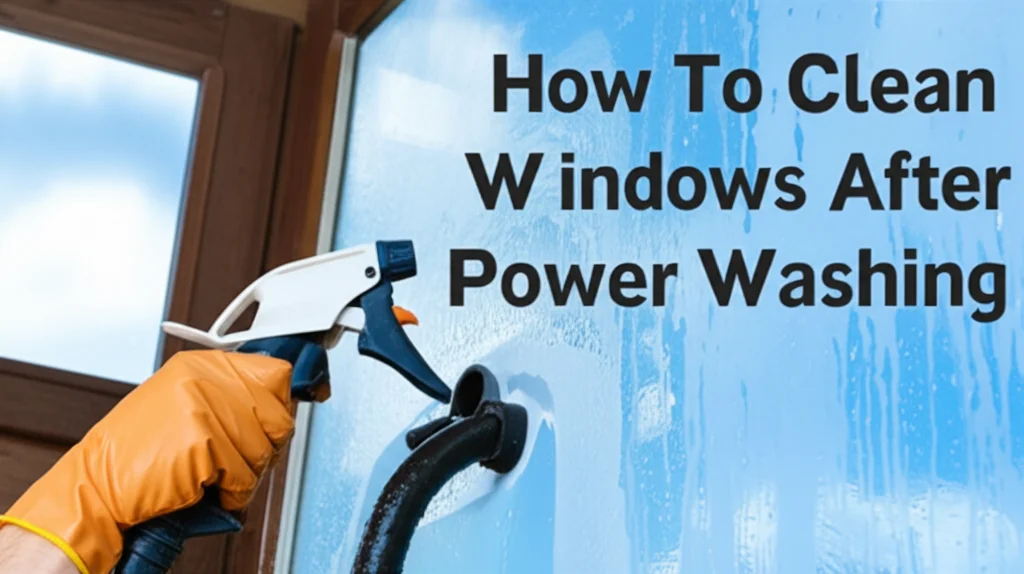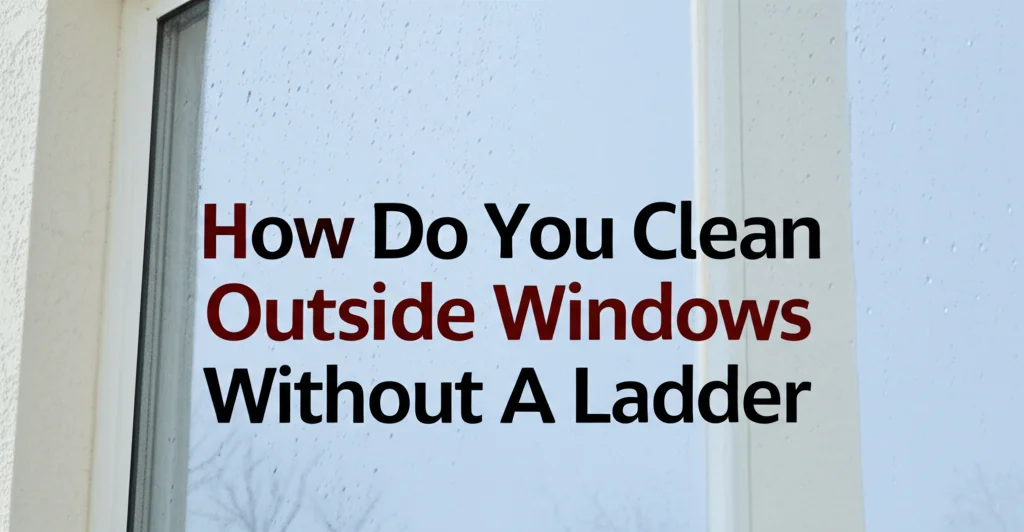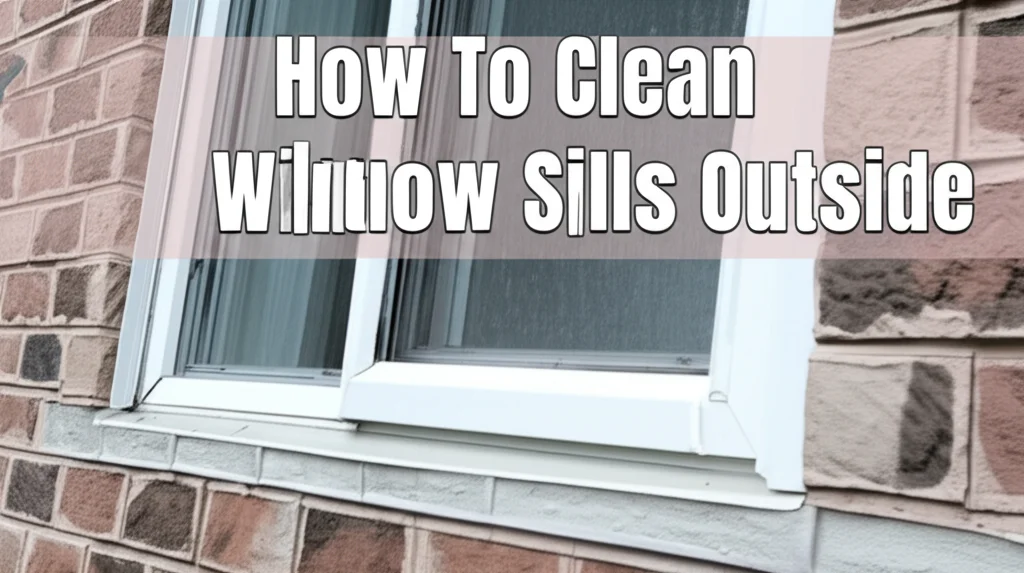· Home Cleaning · 6 min read
How To Clean Windows With Pressure Washer

Sparkling Clean: How To Clean Windows With a Pressure Washer
Ever looked at your windows and wished for a quick, easy way to get them sparkling clean? Using a pressure washer might seem like a shortcut, and it can be, but it requires careful technique. This article will guide you through how to clean windows with a pressure washer safely and effectively. We’ll cover everything from the right nozzle and pressure settings to essential precautions to avoid damage. Cleaning windows with a pressure washer can save you time and effort, especially for those hard-to-reach areas. Let’s dive in and get those windows gleaming!
Can you use a pressure washer to clean windows?
Yes, you can clean windows with a pressure washer, but it requires a low-pressure setting, a wide-angle nozzle, and careful technique to avoid damaging the glass or seals.
Key Takeaways:
- Use a low-pressure setting (below 600 PSI).
- Employ a wide-angle nozzle (40-degree or wider).
- Maintain a safe distance (at least 2 feet) from the glass.
- Always test a small, inconspicuous area first.
Why Use a Pressure Washer for Window Cleaning?
Traditionally, cleaning windows involves a lot of scrubbing, squeegeeing, and reaching. A pressure washer offers a faster, less physically demanding alternative, especially for exterior windows. It’s particularly useful for removing stubborn dirt, grime, bird droppings, and pollen that accumulate over time. However, it’s crucial to understand that pressure washing isn’t a one-size-fits-all solution. Incorrect use can lead to cracked glass, damaged frames, or water infiltration. This guide will help you avoid those pitfalls and achieve professional-looking results.
Understanding the Risks of Pressure Washing Windows
Before you start, it’s vital to acknowledge the potential risks. High pressure can easily shatter glass, especially if it’s already weakened or has chips. Furthermore, forcing water behind window seals can cause leaks and mold growth. The force of the water can also damage window frames, particularly those made of wood or vinyl. Therefore, preparation and caution are paramount. Always remember that a gentle approach is best when it comes to cleaning windows with a pressure washer.
Choosing the Right Pressure Washer Settings & Nozzles
Selecting the correct settings and nozzles is the most important step. You need to minimize the force while still effectively removing dirt. Here’s a breakdown:
- Pressure (PSI): Keep the pressure below 600 PSI. Many pressure washers have adjustable pressure settings. Start with the lowest setting and gradually increase it if needed. Higher PSI is great for driveways, but not for delicate windows.
- Nozzle: A wide-angle nozzle (40-degree or wider) is essential. These nozzles distribute the water over a larger area, reducing the pressure on any single point. Avoid using narrow-angle or turbo nozzles, as they concentrate the force and can cause damage. A soap nozzle can also be helpful for applying cleaning solutions.
- Detergent: Consider using a window cleaning detergent specifically designed for pressure washers. These detergents help loosen dirt and grime, making the cleaning process more effective. Always follow the detergent manufacturer’s instructions.
Preparing Your Windows for Pressure Washing
Proper preparation will make the cleaning process easier and safer. Here’s what you need to do:
- Remove Obstacles: Clear the area around the windows of any furniture, plants, or other objects that could be damaged by water.
- Close Windows and Doors: Ensure all windows and doors are tightly closed to prevent water from entering your home.
- Protect Surrounding Areas: Cover any sensitive areas, such as landscaping or siding, with plastic sheeting to protect them from overspray.
- Pre-Rinse: Lightly rinse the windows with a garden hose to remove loose dirt and debris. This will help prevent scratching the glass during pressure washing.
- Inspect for Damage: Carefully inspect the windows for any cracks or chips. Do not pressure wash damaged windows, as this could worsen the problem.
Step-by-Step Guide to Cleaning Windows with a Pressure Washer
Now that you’ve prepared everything, let’s get to the cleaning process. Remember to work slowly and carefully.
- Test a Small Area: Before cleaning the entire window, test a small, inconspicuous area to ensure the pressure and nozzle are appropriate.
- Maintain Distance: Keep the pressure washer nozzle at least 2 feet away from the glass. This distance will help prevent damage.
- Use a Sweeping Motion: Move the nozzle in a slow, sweeping motion, overlapping each pass slightly. Avoid focusing on one spot for too long.
- Apply Detergent (Optional): If using a detergent, apply it evenly to the window surface using a soap nozzle. Allow the detergent to dwell for a few minutes before rinsing.
- Rinse Thoroughly: Rinse the windows thoroughly with clean water, ensuring all detergent residue is removed.
- Inspect for Streaks: After rinsing, inspect the windows for any streaks or spots. If necessary, repeat the cleaning process or use a squeegee to remove any remaining residue. You might find that a final wipe down with a microfiber cloth is helpful.
Dealing with Different Window Types
Different window types require slightly different approaches. Here’s a quick guide:
- Double-Pane Windows: These are generally more durable but still require a low-pressure setting and a wide-angle nozzle.
- Single-Pane Windows: These are more fragile and require even more caution. Use the lowest possible pressure setting and maintain a greater distance from the glass.
- Storm Windows: Be careful not to force water between the storm window and the main window, as this can cause condensation and mold growth.
- Vinyl Windows: Vinyl frames are relatively durable, but avoid using excessive pressure, as it can cause warping or cracking. If you’re looking for more information on cleaning vinyl, check out this guide on https://www.beacleaner.com/how-to-clean-vinyl-plank-flooring/.
FAQ: Common Questions About Pressure Washing Windows
- Can I use hot water with a pressure washer to clean windows? Hot water can help dissolve dirt and grime more effectively, but it can also cause thermal shock to the glass, especially in cold weather. Use caution and avoid extreme temperature differences.
- What if I accidentally crack a window? If you crack a window, stop immediately and contact a professional glass repair service. Do not attempt to repair the window yourself.
- How often should I pressure wash my windows? The frequency depends on your location and the amount of dirt and grime that accumulates. Generally, once or twice a year is sufficient.
- Is it safe to pressure wash windows above the second story? Pressure washing windows at heights can be dangerous. It’s best to hire a professional window cleaning service for windows above the second story.
- What if my windows have screens? Remove the screens before pressure washing to avoid damage. You can clean the screens separately with a gentle detergent and a garden hose.
Conclusion: Enjoy Sparkling Windows Safely
Cleaning windows with a pressure washer can be a convenient and effective way to achieve sparkling results. However, it’s crucial to prioritize safety and use the correct techniques. Remember to use a low-pressure setting, a wide-angle nozzle, and maintain a safe distance from the glass. By following the steps outlined in this guide, you can enjoy clean, clear windows without risking damage. Don’t hesitate to consult a professional if you’re unsure about any aspect of the process. Now go ahead and give your windows the shine they deserve! If you’re looking for other cleaning tips, you might find this article on https://www.beacleaner.com/how-to-clean-floor-grout-without-scrubbing/ helpful.




